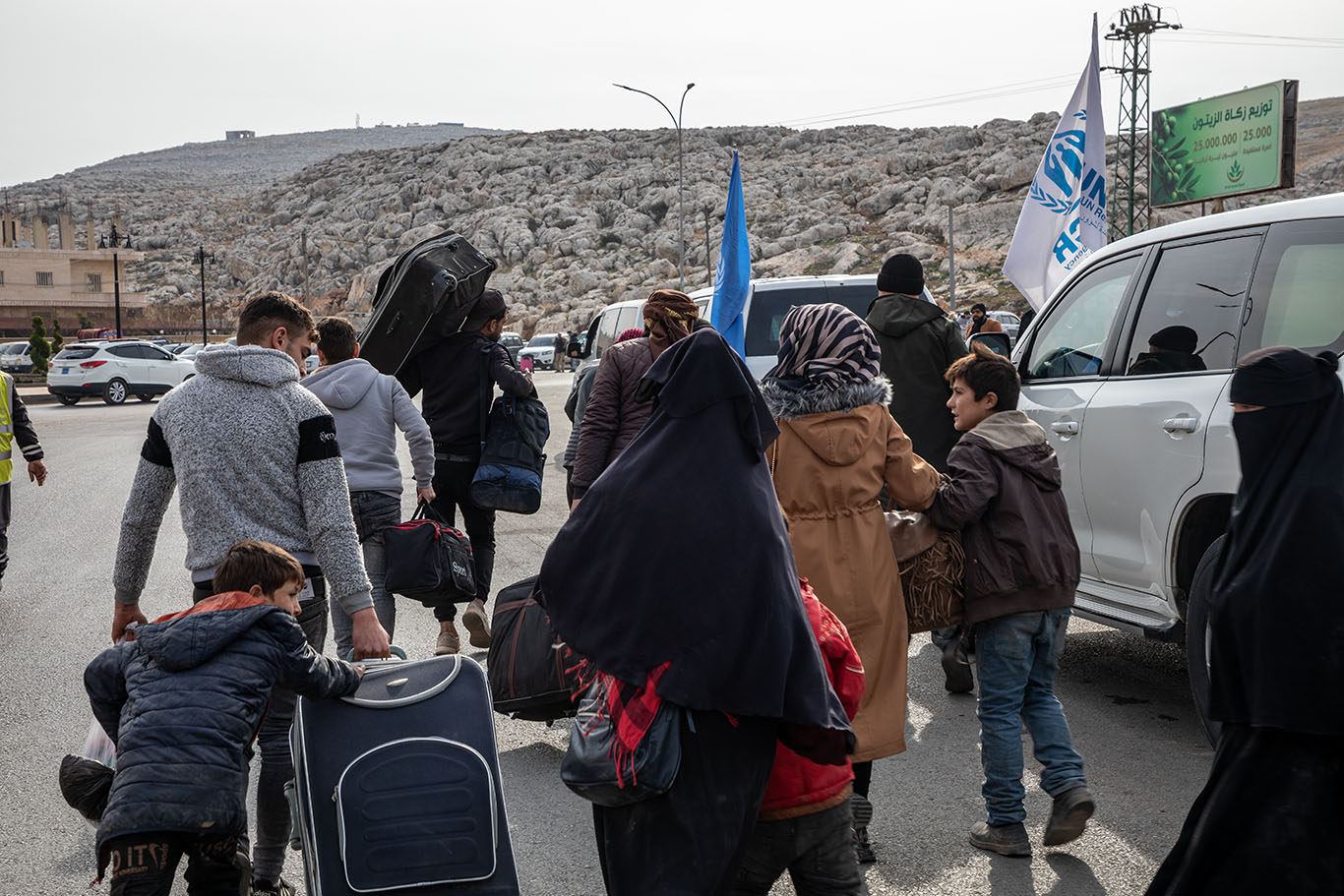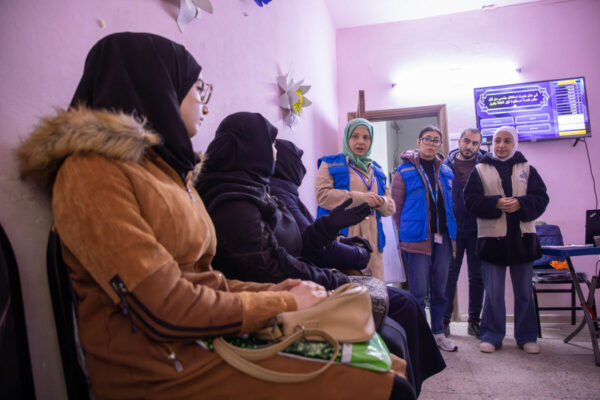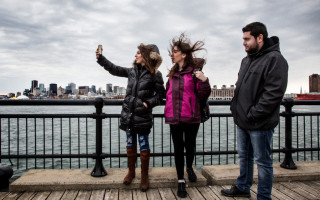
A family of Syrian refugees returns to northern Syria from Türkiye via the Bab al-Hawa border crossing. © UNHCR/Hameed Marouf
This is a summary of what was said by UNHCR Director for the Middle East and North Africa, Rema Jamous Imseis – to whom quoted text may be attributed – at today’s press briefing at the Palais des Nations in Geneva.
While recent developments bring hope and a chance for peace and stability, they also underscore the immense challenges facing displaced Syrians inside the country and refugees abroad.
The situation in Syria is fluid and far from stable. In the past three weeks, we have seen more than 1 million people forced to flee their homes, thousands of Syrian refugees returning, and thousands of Syrians fleeing the country.
Syrian refugees have spontaneously returned to Syria from Türkiye and Lebanon, and a smaller number from Jordan.
Over 7 million people were already internally displaced inside the country while more than 90 per cent of the population needs humanitarian support to survive.
We are trying to monitor all of this and to respond where we can, despite a fragile security situation.
While UNHCR hopes recent developments will eventually bring an end to the largest displacement crisis in the world, the change in regime does not mean this humanitarian crisis has ended.
Syrians inside and outside the country still need protection and support.
UNHCR released an updated position on returns to Syria yesterday, which underscores the principle of nonrefoulement (or no forced returns) and the right of Syrians to access asylum. While protection risks related to persecution by the former Government have receded, other risks for particularly vulnerable groups may persist or emerge.
Given the ongoing uncertainty in Syria, we call on States to be patient and to avoid making any rash assessments or drastic decisions until there is more clarity. It is important to maintain protection for those who have already found refuge in host countries and that they are not forced to return to Syria. Any refugee returns must be voluntary, safe and dignified.
We must not forget that the last 14 years have created a humanitarian catastrophe on so many levels in Syria, including the destruction of large parts of the country, homes and infrastructure.
UNHCR and its partners are on the ground in Syria, rapidly resuming assistance and support programmes where security has improved. Over 80 per cent of our community centres across the country are functioning again after a brief pause.
We have also made significant strides in resuming operations over the past week in areas where the security situation has started to stabilize, such as in Aleppo, Damascus, Homs and Hama. Through our partner the Syrian Arab Red Crescent (SARC), we are also reestablishing a presence at border crossing points. This allows for regular monitoring of inbound and outbound movements, and allows us to engage with returning Syrians, providing them with information on available humanitarian assistance and support in their areas of intended return, including UNHCR-funded community centres.
As well as a peaceful transition of power, we need a firm commitment from the international community to support Syrians with dire humanitarian needs and to invest in reconstruction and recovery initiatives and livelihood opportunities that will empower Syrians to become self-sufficient and less reliant on aid – something we know they are desperate for.
Today, UNHCR released a “Preparedness and Response Plan” for Syria seeking $310 million to address the critical needs of up to 1 million Syrian refugee returnees expected to arrive in Syria between January and June 2025 as part of spontaneous and host government-organized movements from neighbouring countries. This appeal, in collaboration with other UN agencies and partners, also includes support for 200,000 local community members who will be hosting the refugee returnees, as well as returning internally displaced people (IDPs).
We are operating in a very dynamic situation, but we are adapting and being agile given our new operational reality and we hope that our donors can respond with the same flexibility. Resources need to be provided as flexibly as possible to allow assistance to be given where it is most needed.
For more information, please contact:
- In Beirut: Lisa Abou Khaled: aboukhal@unhcr.org, +961 71 880 070
- In Amman: Rula Amin, aminr@unhcr.org, +962 (0) 790 045 849
- In Geneva: William Spindler, spindler@unhcr.org +41 79 549 5998





